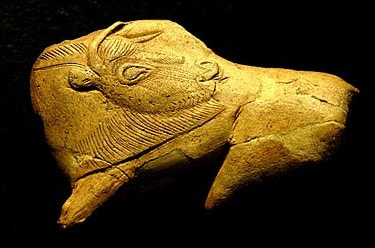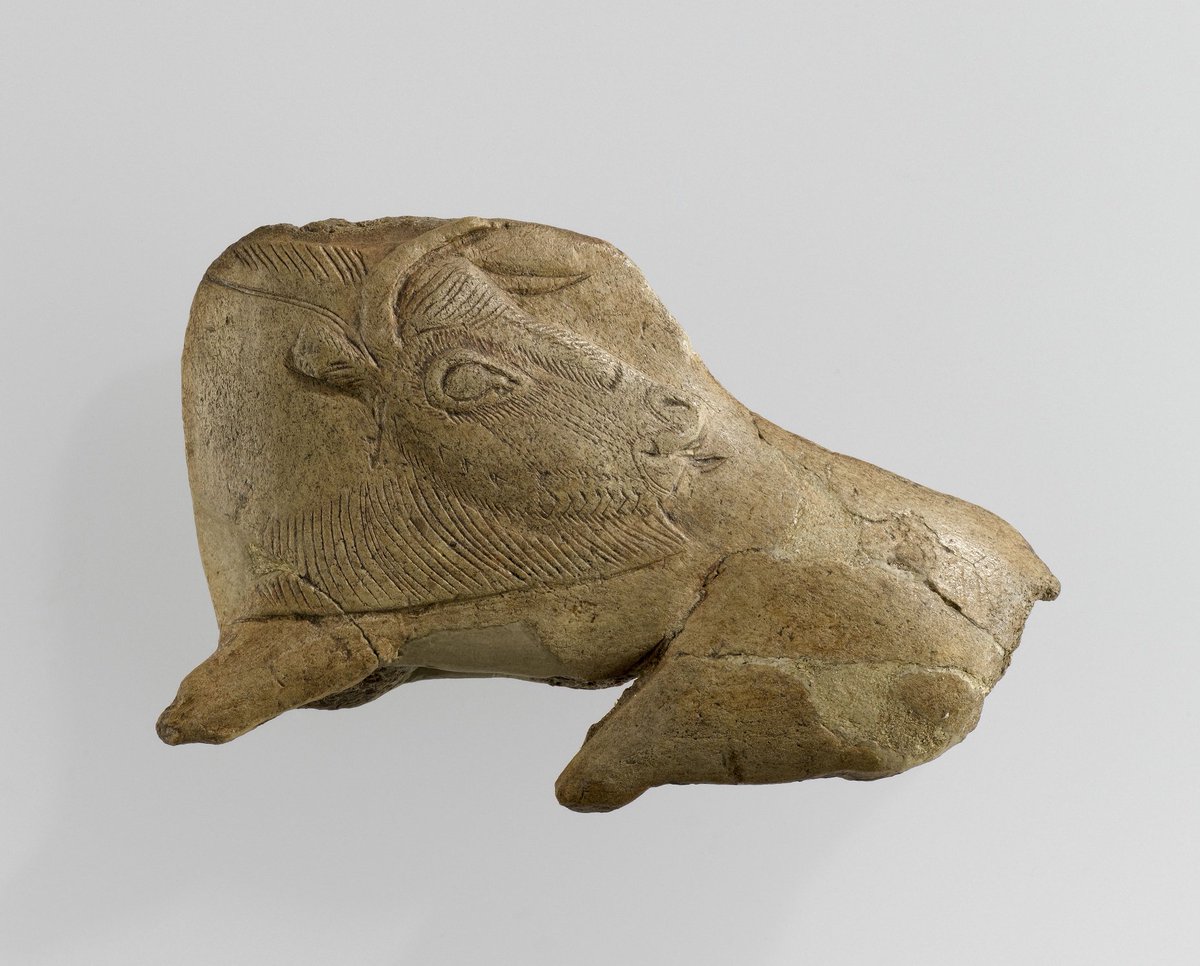Hidden deep within the rolling landscape of southwestern France lies one of the most fascinating glimpses into the artistic prowess of our prehistoric ancestors: a small yet captivating artifact known as *“Bison Licking an Insect Bite.”* This remarkable spear fragment, carved from reindeer antler, has survived more than 12,000 years to tell a story not only of early human craftsmanship but also of their profound relationship with the natural world.
Discovered at the famous archaeological site of Abri de la Madeleine, this ancient piece of art is a vivid portrayal of a steppe bison, a species now long extinct. What makes this depiction so extraordinary is the delicately carved image of the bison engaging in a surprisingly relatable activity: licking an insect bite. At first glance, this detail might seem trivial. But the precision of the carving and the naturalism of the pose reveal something far more profound — an ancient artist’s keen observation of animal behavior, demonstrating a deep, almost empathetic connection with the creatures that roamed their world.
A Window into Prehistoric Life
The creation of *“Bison Licking an Insect Bite”* took place between 20,000 and 12,000 years ago, during the Magdalenian period, a time when art and culture flourished among hunter-gatherer societies in Europe. For these early humans, survival depended on an intimate understanding of the animals they hunted, not just for sustenance but for clothing, tools, and even shelter. The bison, a symbol of power and abundance, was central to their lives, and its likeness appears in numerous forms of prehistoric art, from cave paintings to carvings like this one.

But what’s especially compelling about this particular artifact is the emotion it evokes. The bison’s posture — its head turned, tongue outstretched, attending to an insect bite — brings the animal to life in a way that feels both timeless and universal. It’s a scene that we, thousands of years later, can still recognize and connect with, offering a bridge between modern humanity and the ancient world.
Artistic Skill and Spiritual Depth
Beyond its technical mastery, the artwork carries an emotional and spiritual depth that transcends mere functionality. The delicate carvings, the smooth curves of the bison’s body, and the almost serene expression on its face suggest that this piece was more than just a decoration or a hunting tool. It may have been imbued with symbolic or spiritual significance, reflecting the reverence early humans held for the animals that shaped their lives.

This artifact, like many others from the Paleolithic period, hints at a worldview in which humans were not separate from nature but deeply intertwined with it. The act of carving the bison may have been a way of honoring the creature, acknowledging its importance in the web of life. In an era when survival was far from guaranteed, such artworks could have served as both a tribute to the natural world and a form of spiritual expression, perhaps even a way to invoke good fortune in hunting or protection from the wild forces of nature.
A Silent Reminder of Extinction
What adds another layer of poignancy to *“Bison Licking an Insect Bite”* is the fact that the steppe bison, once a majestic and widespread species, is now extinct. Its image, frozen in time on a piece of carved antler, serves as a silent reminder of the animals that once played a vital role in human existence but have since vanished from the earth. In this way, the artifact not only connects us to the distant past but also forces us to reflect on the fragility of life and the impact of environmental change over millennia.
The Legacy of Prehistoric Art
*“Bison Licking an Insect Bite”* is far more than just an archaeological find. It stands as a testament to the artistry, intelligence, and creativity of prehistoric humans. Through this small but powerful piece, we gain a glimpse into the minds of our distant ancestors — people who, despite living in a world fraught with danger, found inspiration in the beauty and complexity of the animals around them.

The mystery and craftsmanship of this artifact have left modern scholars and enthusiasts alike in awe, fueling curiosity about the nature of art and culture in the Paleolithic era. It challenges us to reconsider long-held assumptions about early humans, revealing that even in the depths of prehistory, there was a sophisticated understanding of life, death, and the natural world.
This carved bison, so meticulously crafted and yet so simple in its depiction of everyday animal behavior, continues to captivate the imagination of all who encounter it. It is a reminder that, even across vast expanses of time, art has the power to connect us — to nature, to history, and to each other.
In the end, *“Bison Licking an Insect Bite”* is not just an ancient relic; it’s a story of survival, a tribute to the natural world, and a window into the soul of humanity’s early journey.

